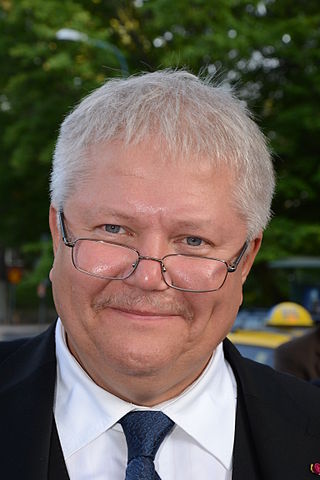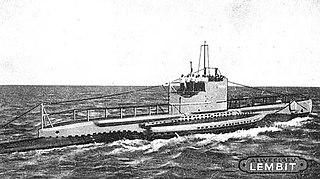The Nasdaq Tallinn AS, formerly known as the Tallinn Stock Exchange, is a stock exchange operating in Tallinn, Estonia. Nasdaq Tallinn is the only regulated secondary securities market in Estonia. The major stock market index is Nasdaq Tallinn, formerly known as TALSE.

Kohtla-Järve is a city and municipality in northeastern Estonia, founded in 1924 and incorporated as a town in 1946. The city is highly industrial, and is both a processor of oil shales and is a large producer of various petrochemical products. During the 1944–1991 Soviet occupation, large numbers of immigrant workers from Russia and other parts of the former USSR were brought in to populate the rapidly growing city. The population in the Kohtla-Järve area which had been, as of 1934 census, over 90% ethnic Estonian, became overwhelmingly non-Estonian in the second half of the 20th century. According to more recent data 21% of the city's population are ethnic Estonians; most of the rest are Russians. Kohtla-Järve is the fifth-largest city in Estonia in terms of population.

Rein Lang is an Estonian politician, a member of the Estonian Reform Party since 1995, and a diplomat. He was the Minister of Culture in Andrus Ansip's third cabinet until his resignation.

Mart Laar is an Estonian politician and historian. He served as the Prime Minister of Estonia from 1992 to 1994 and from 1999 to 2002. Laar is credited with having helped bring about Estonia's rapid economic development during the 1990s. He is a member of the centre-right Isamaa party.
Eesti Päevaleht is a major daily Estonian newspaper, from the same publishers as the weekly Eesti Ekspress.

The Bank of Estonia is the Estonian member of the Eurosystem and has been the monetary authority for Estonia from 1919 to 2010, albeit with a long suspension between 1940 and 1991, issuing the Estonian kroon. The bank doesn't translate its name to English but uses its Estonian name Eesti Pank in all English communications.

Paldiski is a town and Baltic Sea port situated on the Pakri Peninsula of northwestern Estonia. Since 2017, it has been the administrative seat of Lääne-Harju Parish of Harju County. Previously a village of Estonia-Swedes known by the historical name Rågervik, it was extended into a Russian naval base in the 18th century. The Russian authorities renamed it Балтийский Порт in 1762. In written Estonian, the name was spelled Baltiski until 1933, when the phonetically spelled version Paldiski became official.
Postimees is an Estonian daily newspaper established on 5 June 1857, by Johann Voldemar Jannsen. In 1891, it became the first daily newspaper in Estonia. Its current editor-in-chief is Priit Hõbemägi. The paper has approximately 250 employees.
Õhtuleht is the largest daily newspaper in Estonia. It is a tabloid newspaper. The newspaper is published in Tallinn in the Estonian.
Viru Keemia Grupp (VKG) is an Estonian holding group of oil shale industry, power generation, and public utility companies.

Hiiu Stadium is a football stadium in Tallinn, Estonia. Opened in 1936, it is the home ground of Nõmme Kalju FC. The stadium is located about 8 km southwest of the city centre, in the district of Nõmme. The address of the stadium is Pidu tänav 11, Tallinn.

EML Lembit is one of two Kalev-class mine-laying submarines built for the Republic of Estonia before World War II, and is now a museum ship in Tallinn. She was launched in 1936 at Vickers-Armstrongs, Barrow-in-Furness, and served in the Estonian Navy and the Soviet Navy. Until she was hauled out on 21 May 2011, Lembit was the oldest submarine still afloat in the world. Her sister ship, Kalev, was sunk in October 1941. Lembit is named for Lembitu, an Estonian ruler who resisted the Livonian Crusades.
Since 1991 Estonia has changed from being a former Soviet republic to a member of the European Union and the European Monetary Union, making a rapid transformation in several fields, including the mass media, which is a vibrant and competitive sector. For many years Estonia has been among the top ten in Reporters Without Borders’ (RSF) Press Freedom Index. In 2017 it was ranked 12th out of 180 countries by RSF while Freedom House assigned Estonia’s press freedom a score of 16/100. A cross-media landscape that embraces traditional media as well as the Internet and digital media characterises the contemporary media system in Estonia.
Latvia is one of the three post-Soviet Baltic states having regained independence in 1991 and since 2004 is a member State of the European Union. After its independence there have been fundamental changes of political, economic and social nature that have turned Latvia into a democratic country with a free market economy. This reflects on the mass media landscape which is considered well-developed despite being subjected to a limited market and a linguistic and cultural split between Latvian (58.2%) and Russian speakers (37.5%). In 2017 Freedom House defined Latvia's press freedom status as “free", assigning to the country's press freedom a score of 26/100. The 2017 World Press Freedom Index prepared annually by Reporters Without Borders (RSF) states that media in Latvia have a "two-speed freedom", underlying different levels of freedom for Latvian-language and Russian-language media. According to RSF's Index the country is ranked 28th among 180 countries.

This is a survey of the postage stamps and postal history of Estonia. The stamps of Estonia are issued by the postal administration Eesti Post which is the country's only provider of universal postal services.

GoRail is a rail freight operator in Estonia, and also offers related training services. Until commencing offering freight services in 2019 it was a passenger service operator, and until 2020 it operated the only direct international passenger rail services from Estonia.
Maaleht is the biggest weekly newspaper published in Estonia.

Eerik-Niiles Kross is an Estonian politician, diplomat, former chief of intelligence and entrepreneur. He is a member of parliament (Riigikogu). During the 1980s, Kross was a prominent figure in the anti-Soviet non-violent resistance movement in Soviet Estonia. After re-independence, in 1991, he joined Estonia's Foreign Ministry. He served as the head of intelligence from 1995 to 2000; and as national security advisor to former President Lennart Meri in 2000 and 2001.
Eesti Ajalehed was an Estonian publishing company, which published the newspapers Maaleht and Eesti Ekspress. The company belonged to the Tallinn Stock Exchange. The company operated in Tallinn. In 2015, Ekspress Grupp merges its subsidiaries AS Eesti Ajalehed and AS Delfi into one company, which was named AS Ekspress Meedia.

AS Postimees Grupp, formerly known as AS Postimees and AS Eesti Meedia, is an Estonian media holding company headquartered in Tallinn. The company is currently owned by MM Group, having acquired the half of the company from Norwegian company Schibsted in 2013 and bought the remaining half in 2015. The group is one of the largest media group in the Baltics. Among the Group's activities are creation of print and online media, production of television and radio, e-commerce.











